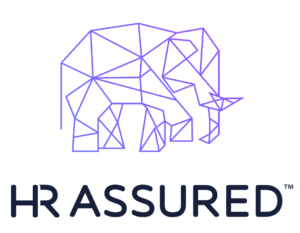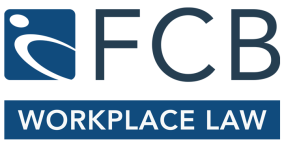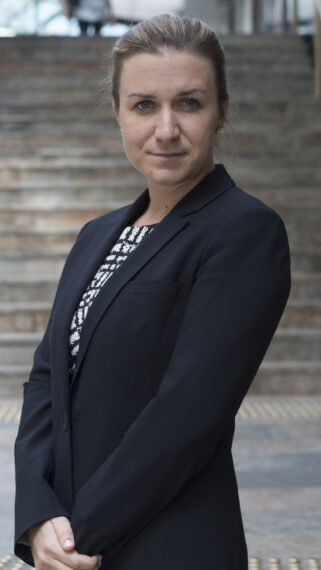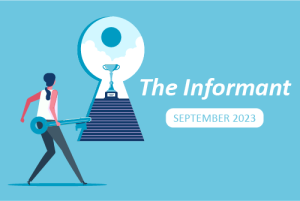Risk and remote working: managing the health and safety of your at-home workforce
May 31, 2021The environments in which we work have always been a topic of interest to me. Indeed, I was the first to put my hand up to join the open-plan implementation committee at my previous law firm – if someone was asking me to work within two metres of my closest peers for hours on end, I wanted to have something to say about it!
Like most people, I’m a person that wants to feel energised, motivated, stimulated, and comfortable in my workspace. So, you can imagine how I reacted in March 2020 when the world was swept into a state of lockdown, forcing me to work from a home office which, at that time, consisted of an abandoned desk complete with two empty highlighters and unfiled personal documents! While I wasn’t impressed with my newfound (un-airconditioned) workspace, I was excited by the prospect of the global working from home experiment.
Remote working from home carries with it psychological risks different to those that exist when working from your regular workplace, especially when you’re not sharing the working-from-home experience with another member of your household.
For the first three weeks, working from home had a freshness about it – work was more exciting when it was done in comfortable clothes with my feet tucked underneath me on a comfortable couch for hours on end. I bunkered down, was incredibly productive, and felt empowered that I could achieve so much from the comfort of my own home. However, things really started to take a turn for me in the fourth week working from home. In speaking with friends and clients since, it appears that the third or fourth week was when the novelty wore off for them too. The honeymoon was over, and I began to wonder, how long would this last?
The mornings rolled into the nights and the weekdays rolled into the weekends. I lost all sense of when it was time to work and when it was time to, well… not work. The boundary between home life and work life became perilously unclear.
I’m grateful that I’m part of an adaptable and agile organisation that reacted with impressive speed to the global shift in the “working experience”. It made the world of difference to know that my employer had my back, and I had its back, as we together navigated the challenges and rewards of remote working. New practices, procedures and policies were established, and those that already existed were modified, to ensure that all of us were working in environments where risk to our health and safety was being appropriately managed.
The pandemic accelerated the shift to flexible working in a way that had previously seemed impossible and we soon realised how good we were at it! As more time has passed since the start of the pandemic, the more I’m convinced that remote working is here to stay.
The data is in
A recent survey, created to inform a possible pandemic-driven variation of the Clerks – Private Sector Award 2020, revealed that 64% of the clerical workforce across 123 businesses had been working from home since July and, of those, more than 70% were women. Businesses were also asked about the reasons for the enduring shift to working from home, and it appears that the most common reason for employees sustaining the changes to their working arrangements included, unsurprisingly, family and caring arrangements and attending to personal matters. I must admit, in working from home it’s been a blessing to spend time with my kids for an extra hour or two with the commute eliminated from my working day.
Of those businesses surveyed, 69% said they would allow employees to work from home at least some of the time in the future. But, of most interest to me, 60% of those businesses said they lacked a working from home policy. While businesses may have implemented temporary measures to manage risks when their employees started working remotely, these temporary measures may no longer be relevant or sufficient to appropriately manage risk into the future.
Evaluate your risks
Every businesses should take the time now to carefully evaluate its risks with respect to its employees’ mental and physical health and safety, and other risks created by remote working, and create a plan, or re-evaluate existing plans, to ensure that those risks are adequately and appropriately managed.
A worker’s psychological health, just as much as their physical health, can be adversely affected in the workplace. It is well established that a person’s workplace includes their home, and other places where they are performing work. Therefore, instead of having one designated workspace that must be under an employer’s watchful eye, there are now countless workspaces in existence at the same time, and the same expectations are put on employers to take reasonable steps to ensure the safety of the employees working within them. So, how is it that an employer can genuinely discharge its duties and responsibilities under workplace health and safety laws when employees are not being watched in their new workspaces, and where no one workspace is like the other?
It’s no surprise that employers have become nervous about managing risk in this new flexible work world. As an employer, you need to understand the risks to your workers’ psychological and physical health in their new workplaces. It may be the case that the same risks exist as in the regular workplace, but that certain risks are heightened or even reduced. From there, you must determine the control measures needed to appropriately manage those risks. This is where you will likely see a difference – the control measures implemented in a traditional workplace will not necessarily be the control measures you must implement in a home workspace. For example, you may have implemented control measures, such as planned monthly social engagements, to keep people connected in the regular workplace, but now might need to have more regular engagements as employees aren’t experiencing the interactions incidental to working in the same physical workspace.
Have a safety plan
Of the 123 businesses surveyed by the FWC’s survey, only a third provided their employees access to mental health support, while 21% reported no additional payments or support. Having a psychological and physical health and safety plan in place is essential for all businesses to ensure that they meet their obligations under workplace health and safety laws.
Does your safety plan tick all of these boxes?
- Are your policies and procedures up to date to adapt to the new arrangements? For example, does your grievance or complaints policy allow employees to seek to resolve their grievances while they are not working from the office? Have your policies been revised to ensure your business’ confidential information is safe?
- Is your plan clear on workplace safety procedures, such as physical injury management, workspace cleaning, physical distancing, and personal hygiene requirements?
- Does your plan provide lawful and reasonable directions and procedures to require employees to work from a safe environment and report health and safety risks and issues that may arise?
- Does your plan define clear boundaries as to when you expect your employees to work, to prevent burnout and, consequently, a psychological injury?
- Does your plan include a comprehensive safe workspace and workplace checklist? And, just as important, have those checklists been completed and returned to you by each employee?
- Have your employees been consulted about the equipment they need, and their individual needs, in working from home?
- Does your plan require regular, planned engagements to connect socially with co-workers?
- Does your plan allow employees to access employee assistance programs easily and consistently, with community standards around social distancing and other COVID-19 control measures?
These are just some examples of how a business must reflect and determine whether they’ve made the appropriate changes necessary to reflect their new working arrangements. Employers should still do this, even if all or most of the workforce has returned to the office and working from home will only occur on an ad hoc basis.
If you need advice about your working from home safety plan, or any other aspect relating to managing the risks of remote working environments, please get in touch with Brittany Byrne for a confidential discussion.


























